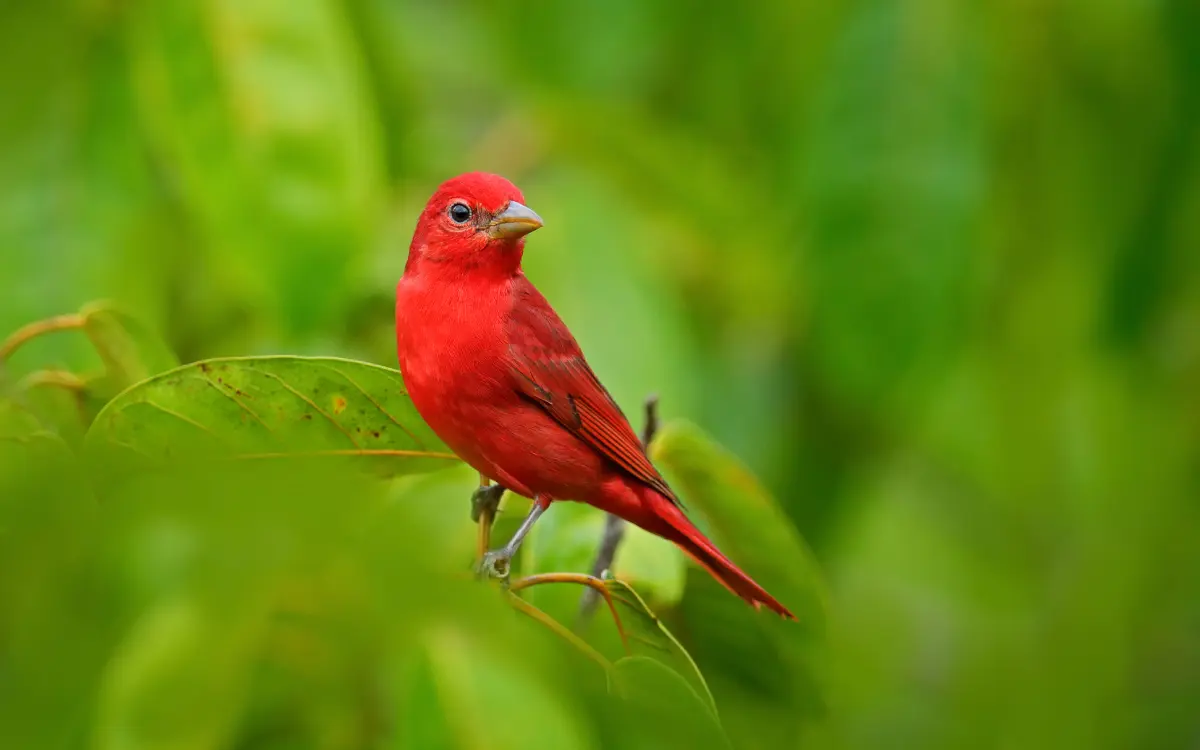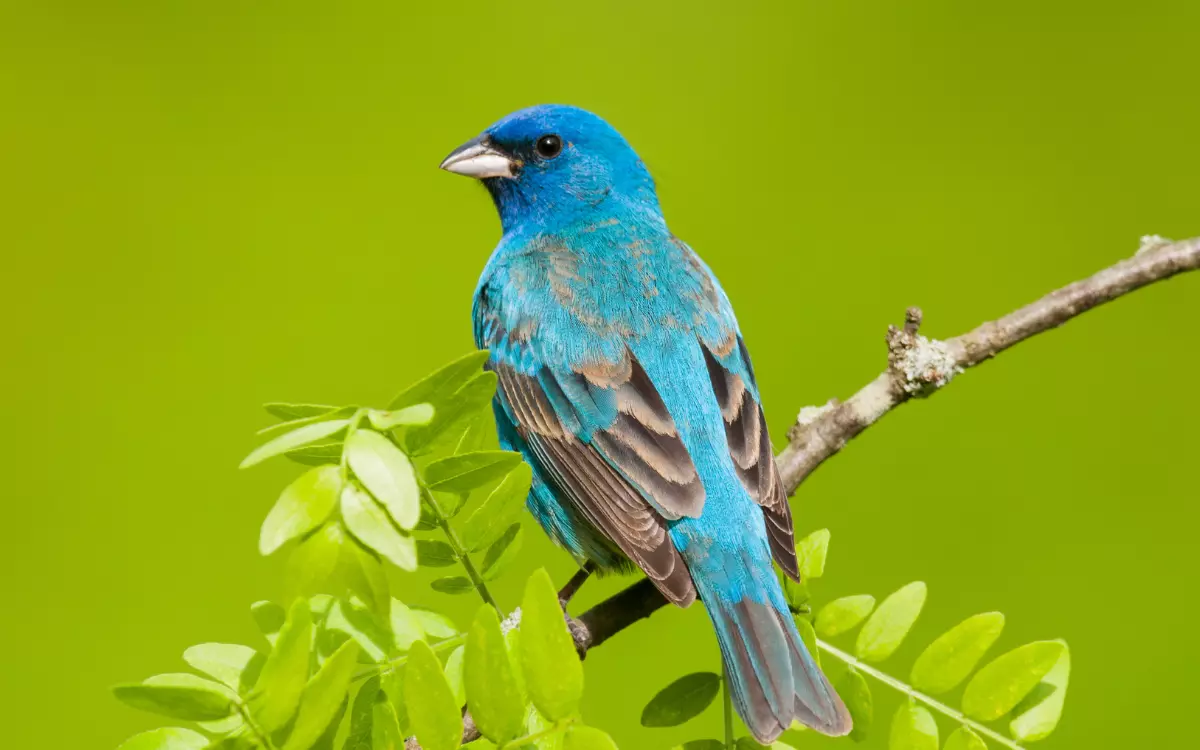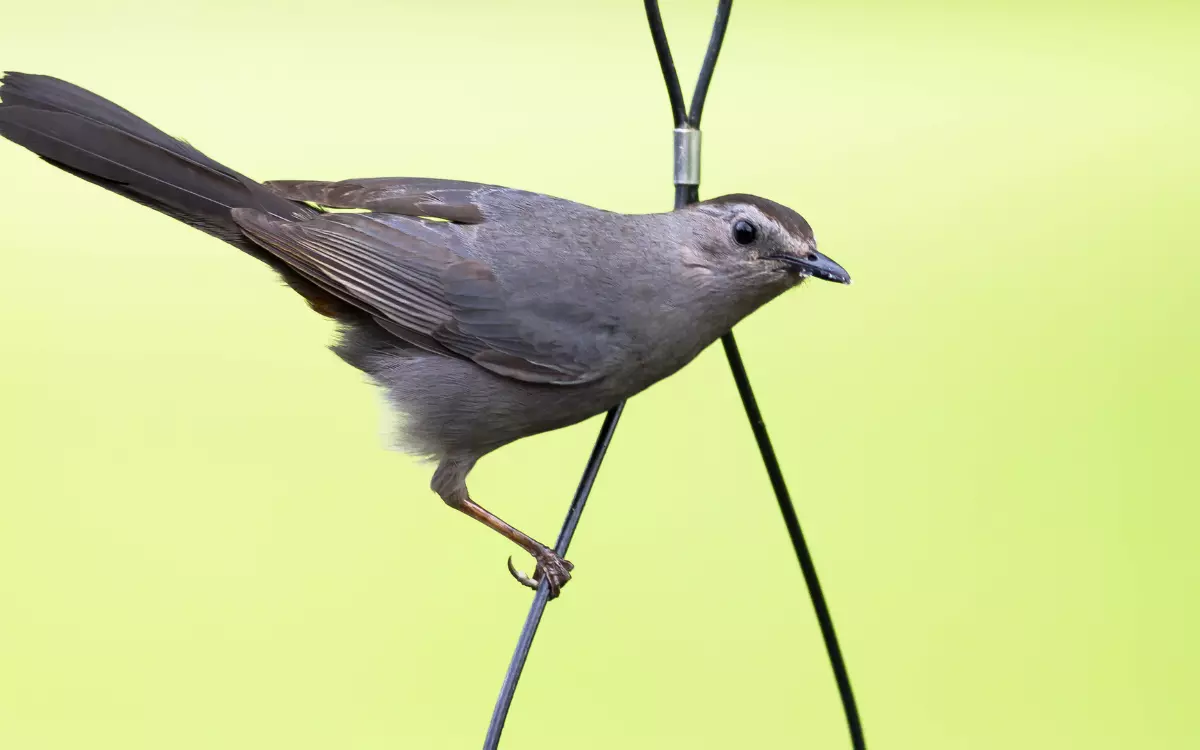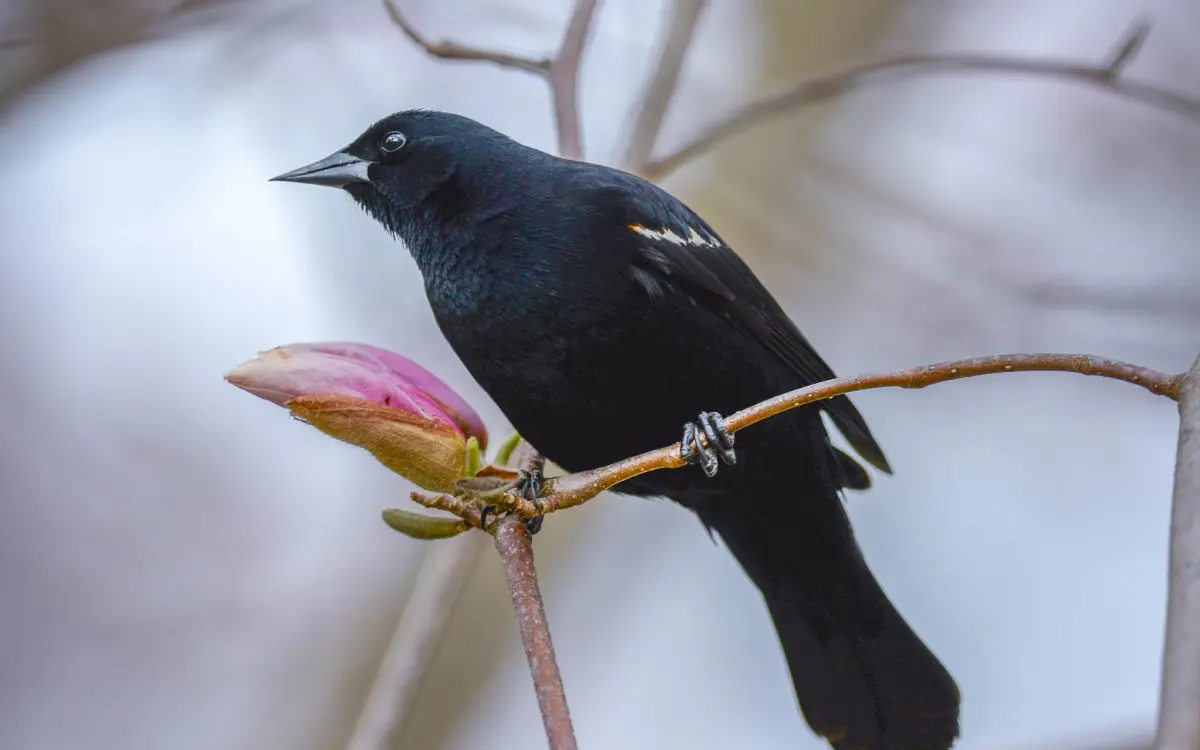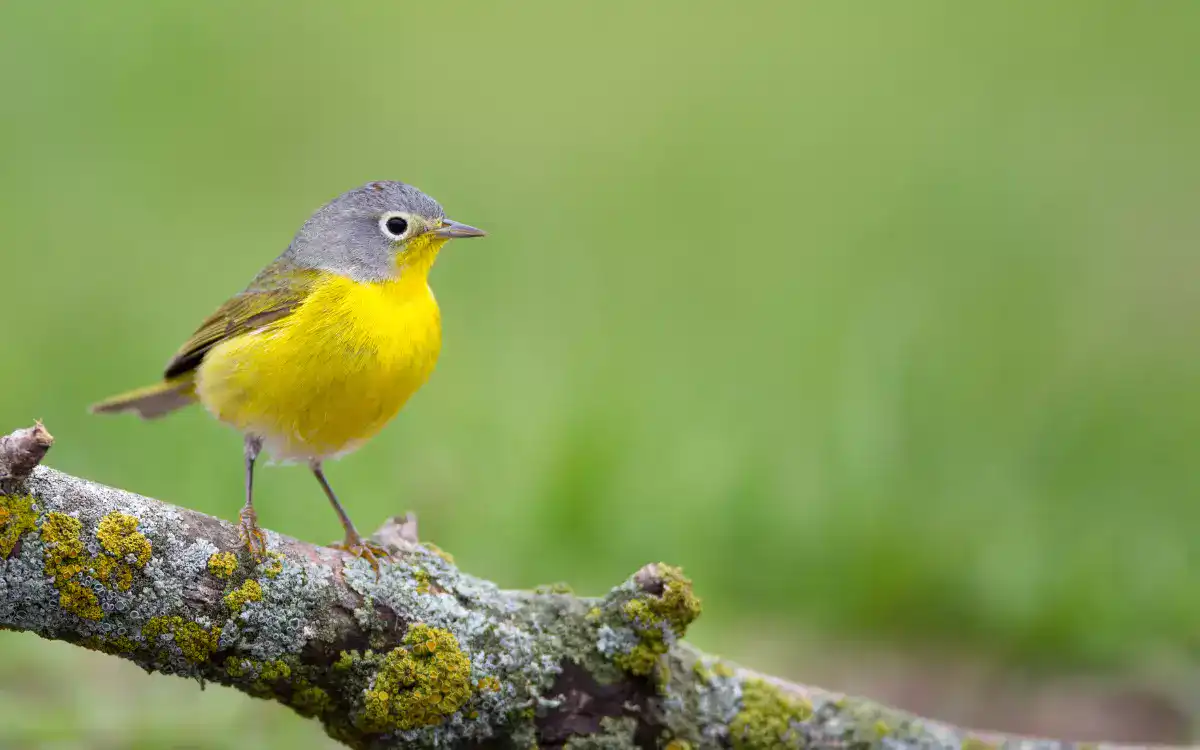17 Unique Largest Birds In West Virginia
The 17 largest birds in West Virginia include iconic species like the Bald Eagle, the Great Blue Heron, and the American White Pelican.
Characteristics of Large Birds:
Large birds have big wingspans, meaning their wings are really wide, which helps them fly smoothly and with less effort. They are also heavier than smaller birds, needing strong muscles and bones to support their size. These birds live in various places like large lakes where they catch fish or tall trees and mountains for nesting.
For example, the Great Blue Heron likes to live by water to fish, while the Bald Eagle may live in high places like cliffs. Knowing about these traits helps us understand how these birds fit into their homes in nature.
List of All 17 Largest Birds In West Virginia with their Lots of information:
1.Trumpeter Swan (Cygnus buccinator):
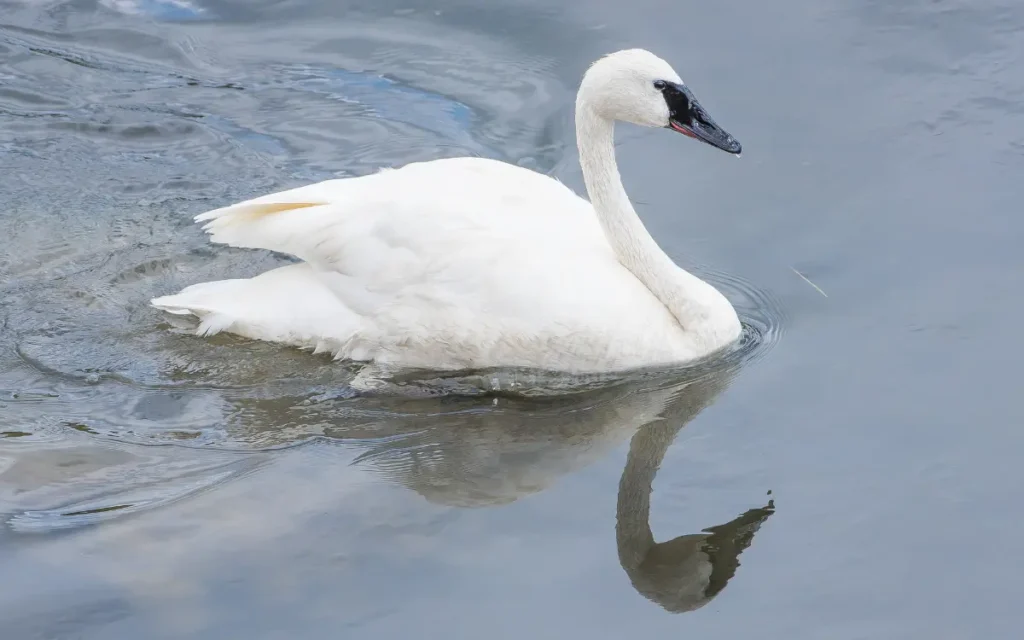
- Kingdom: Animalia
- Phylum: Chordata
- Class: Aves
- Order: Anseriformes
- Family: Anatidae
- Subfamily: Anserinae
- Genus: Cygnus
- Species: Cygnus buccinator
The Trumpeter Swan is the largest native swan in North America. It has a heavy body, a long neck, and pure white feathers. You can recognize it by its black bill and distinct loud, trumpet-like call, which is where it gets its name.
These swans prefer to live in large, open wetlands, rivers, and lakes, especially in regions that are secluded and undisturbed by humans. Trumpeter Swans are known for their strong pair bonds; they mate for life and are very protective of their nests. They mainly eat aquatic plants, small fish, and grains found in their watery habitats.
- Length: 54.3-70.9 in (138-180 cm)
- Weight: 194.0-504.4 oz (5500-14300 g)
- Wingspan: 72.0-102.0 in (183-259 cm)
2. Mute Swan (Cygnus olor)
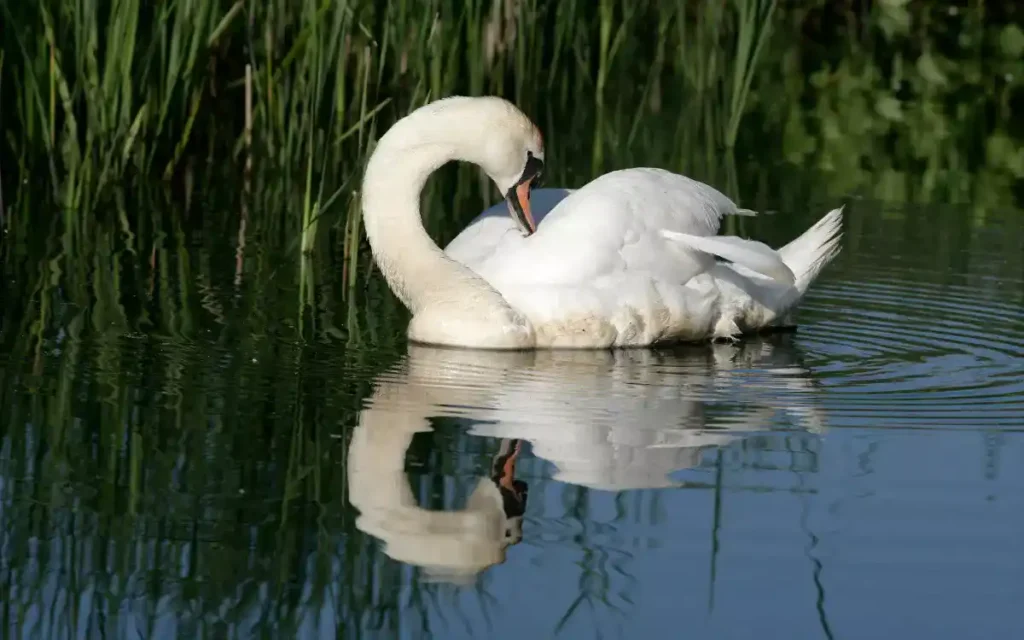
- Kingdom: Animalia
- Phylum: Chordata
- Class: Aves
- Order: Anseriformes
- Family: Anatidae
- Subfamily: Anserinae
- Genus: Cygnus
- Species: Cygnus olor
The Mute Swan is known for its beautiful and large appearance. It has a long neck and an elegant white body, making it easy to spot. These swans are usually found in calm lakes and rivers, where they glide gracefully over the water. They can be quite territorial, especially during breeding season when they protect their nests fiercely.
Mute Swans eat aquatic plants, which they find by dipping their heads underwater. Despite being called “mute,” they can make a variety of sounds, especially when threatened. They are often seen in parks and are popular for their majestic beauty.
- Length: 50.0-59.8 in (127-152 cm)
- Weight: 194.0-504.4 oz (5500-14300 g)
- Wingspan: 81.9-93.7 in (208-238 cm)
3. Wild Turkey (Meleagris gallopavo)
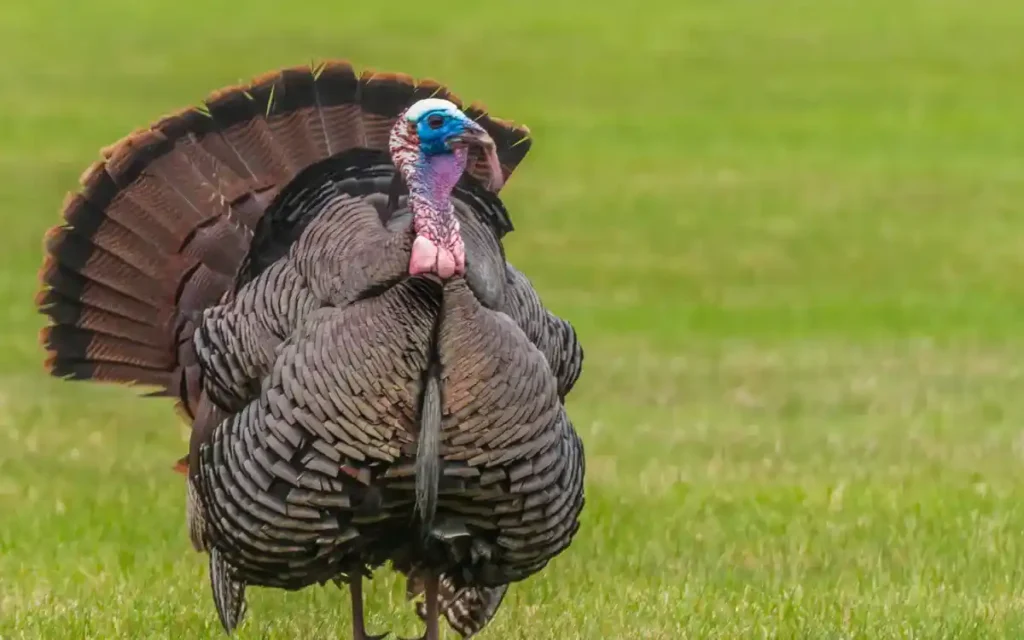
- Kingdom: Animalia
- Phylum: Chordata
- Class: Aves
- Order: Galliformes
- Family: Phasianidae
- Subfamily: Phasianinae
- Genus: Meleagris
- Species: Meleagris gallopavo
The Wild Turkey is a large bird famous for its dark feathers and fan-shaped tail. Males, known as toms, display bright colors and puff up to attract females during mating season. Wild Turkeys live in forests and open woodlands across North America, often wandering into grassy areas to feed. They are ground-dwellers but can fly short distances, especially to roost in trees at night.
These birds are social and often seen in groups called flocks. They eat a variety of foods, including nuts, seeds, fruits, insects, and small reptiles. The Wild Turkey is known for its strong legs and quick running when threatened.
- Length: 35.8-46.1 in (91-117 cm)
- Weight: 88.2-381.0 oz (2500-10800 g)
- Wingspan: 49.2-61 in (125-155 cm)
4. American White Pelican (Pelecanus erythrorhynchos):
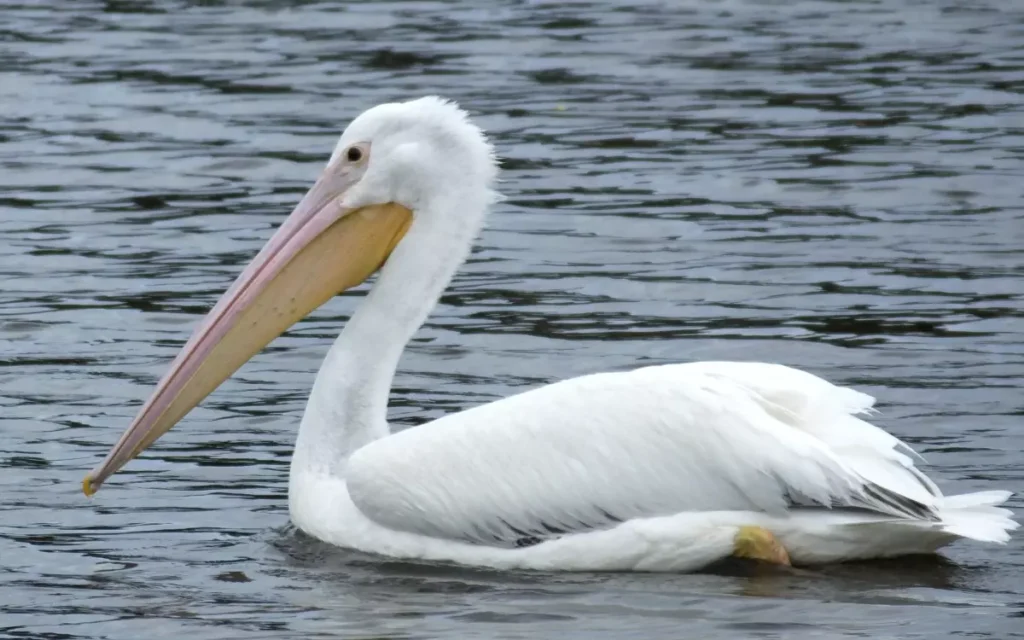
- Kingdom: Animalia
- Phylum: Chordata
- Class: Aves
- Order: Pelecaniformes
- Family: Pelecanidae
- Subfamily: –
- Genus: Pelecanus
- Species: Pelecanus erythrorhynchos
The American White Pelican is a very large bird with a massive wingspan that can reach up to 9 feet, making it one of the largest birds in North America. It has bright white feathers and a long, flat bill with a large pouch for catching fish. These pelicans are usually found in freshwater lakes and marshes during breeding season but migrate to coastal waters in winter.
Unlike other pelicans, they don’t dive for their food; instead, they work together in groups to herd fish into shallow waters and scoop them up. They are known for their cooperative hunting behavior and are a striking sight during migration.
- Length: 50-65 inches (127-165 cm)
- Weight: 159-317 oz (4500-9000 g)
- Wingspan: 96-114 inches (244-290 cm)
5.Canada Goose (Branta canadensis):
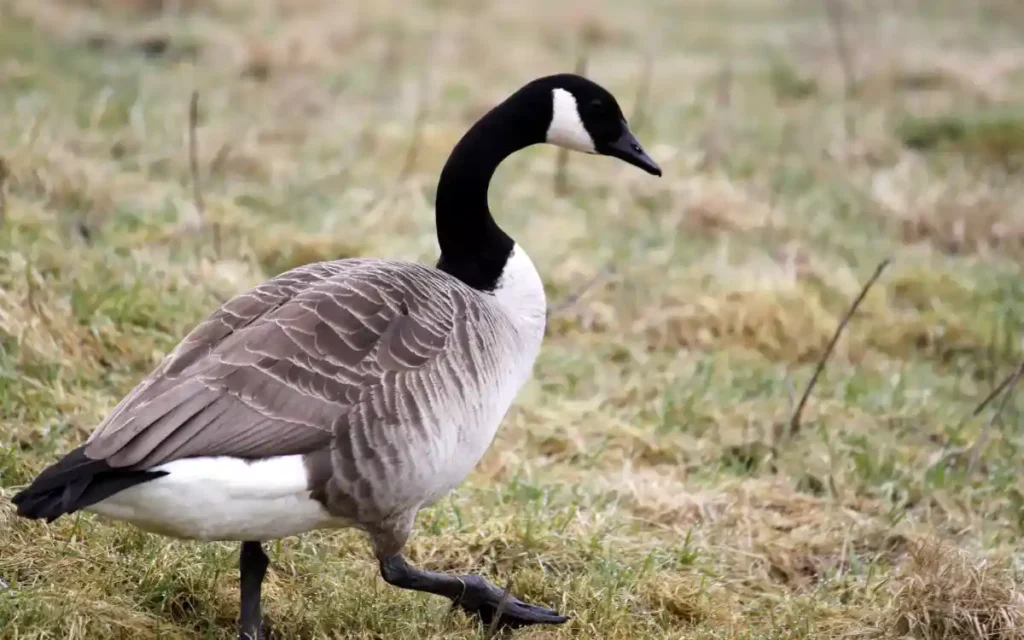
- Kingdom: Animalia
- Phylum: Chordata
- Class: Aves
- Order: Anseriformes
- Family: Anatidae
- Genus: Branta
- Species: Branta canadensis
The Canada Goose is well-known for its black head and neck, white cheeks, and brown body. It’s a large bird, easily recognized by its distinctive honking call and V-shaped flying pattern. Canada Geese are commonly found in a variety of habitats, including ponds, lakes, rivers, and grassy fields where they graze on grasses and aquatic plants.
They are highly social birds, often seen in large flocks, especially during migration. One notable behavior is their strong migratory instinct, flying long distances in seasonal patterns. They are also protective of their nesting sites and can be quite aggressive if threatened.
- Length: 29.5-43.3 in (75-110 cm)
- Weight: 88.2-408.0 oz (2500-11560 g)
- Wingspan: 50.0-73.0 in (127-185 cm)
6. Bald Eagle (Haliaeetus leucocephalus):
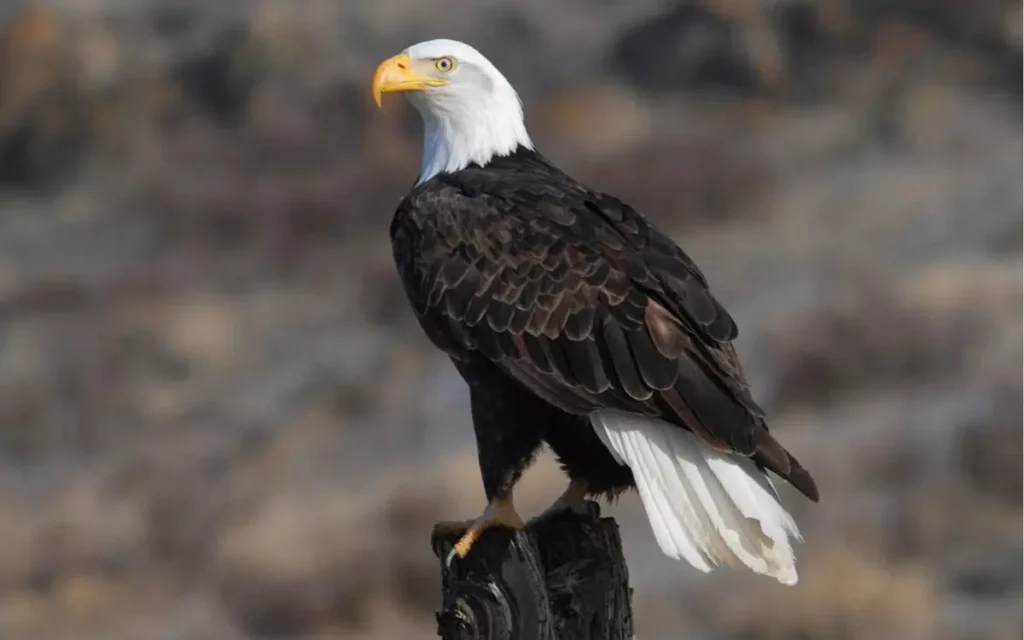
- Kingdom: Animalia
- Phylum: Chordata
- Class: Aves
- Order: Accipitriformes
- Family: Accipitridae
- Genus: Haliaeetus
- Species: Haliaeetus leucocephalus
The Bald Eagle is a majestic bird known for its white head and tail contrasted against a dark brown body and wings. It’s recognized as a symbol of the United States, representing strength and freedom. Bald Eagles are often found near lakes, rivers, and coastal areas because they prefer habitats where fish, their primary food source, are plentiful.
They are excellent at fishing, swooping down to snatch fish right out of the water with their powerful talons. Bald Eagles are also known for their impressive nests, which are large structures built high in trees or on cliffsides. They are very territorial during breeding season, often seen circling their area to protect it.
- Length: 27.9-37.8 in (71-96 cm)
- Weight: 105.8-222.2 oz (3000-6300 g)
- Wingspan: 80.3 in (204 cm)
7.Golden Eagle (Aquila chrysaetos):
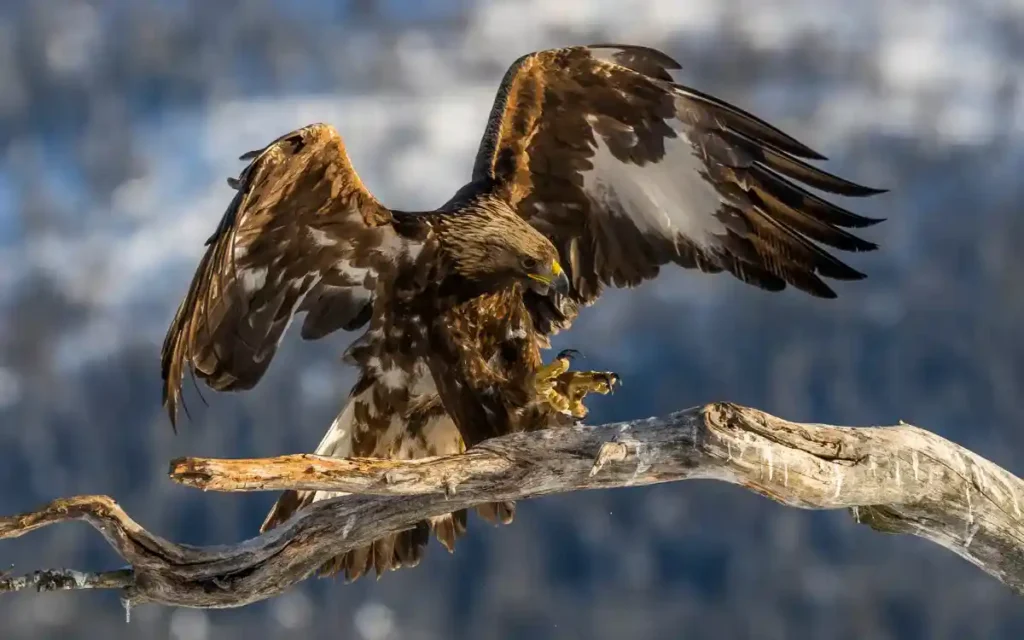
- Kingdom: Animalia
- Phylum: Chordata
- Class: Aves
- Order: Accipitriformes
- Family: Accipitridae
- Genus: Aquila
- Species: Aquila chrysaetos
The Golden Eagle is a powerful raptor known for its dark brown body with golden feathers on the back of its neck. This bird is among the largest birds of prey in North America. Golden Eagles prefer open and rugged terrains like mountains and cliffs, which provide wide vantage points for spotting prey.
They are skilled hunters, primarily feeding on medium-sized mammals such as rabbits and ground squirrels, and occasionally on larger prey like deer. The Golden Eagle is solitary and territorial; it is often seen alone or in pairs, especially during the breeding season when it builds large nests in high places.
- Length: 27.6-35.4 inches (70-90 cm)
- Weight: 6.4-13.2 pounds (2840-6665 grams)
- Wingspan: 72.8-88.6 inches (185-225 cm)
Read also: 8 White Birds In West Virginia (ID & INFO)
8.Sandhill Crane (Antigone canadensis):
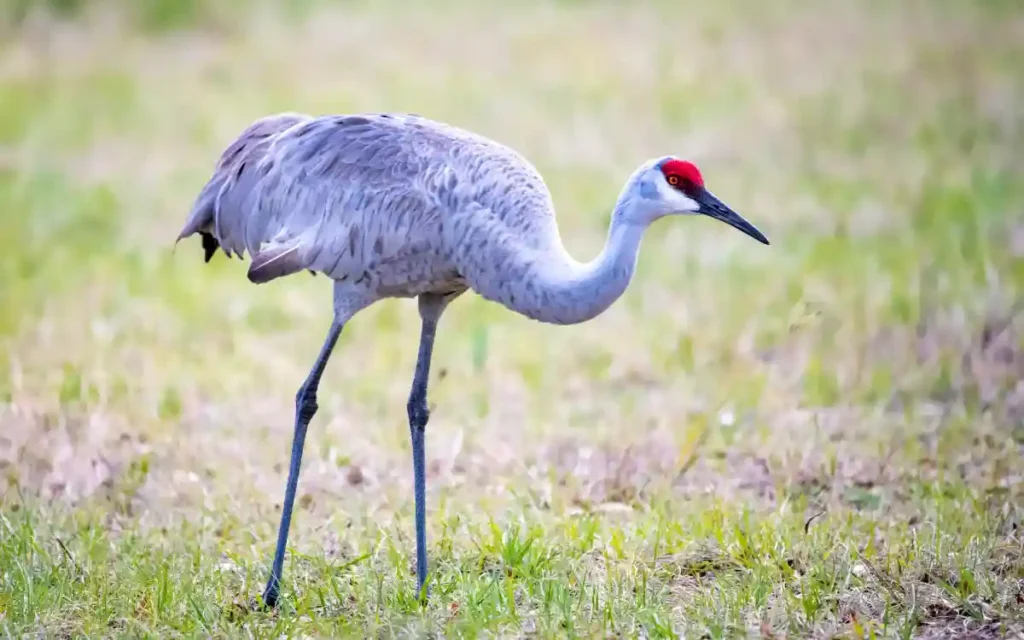
- Kingdom: Animalia
- Phylum: Chordata
- Class: Aves
- Order: Gruiformes
- Family: Gruidae
- Genus: Antigone
- Species: Antigone canadensis
The Sandhill Crane is a large bird, notable for its grey body and red forehead. It stands tall with long legs and a long neck, making it easy to spot in its natural habitats. These cranes are often found in open wetlands, grasslands, and fields across North America.
They are famous for their spectacular courtship dances, which include jumping, bowing, and wing-flapping. Sandhill Cranes are migratory birds, traveling in large flocks to their breeding grounds in northern regions. During migration, their loud, rattling call can be heard from far distances, making them a remarkable sight for bird watchers.
- Length: 47.2 in (120 cm)
- Weight: 119.9-172.8 oz (3400-4900 g)
- Wingspan: 78.7 in (200 cm)
9.Great Blue Heron (Ardea herodias):
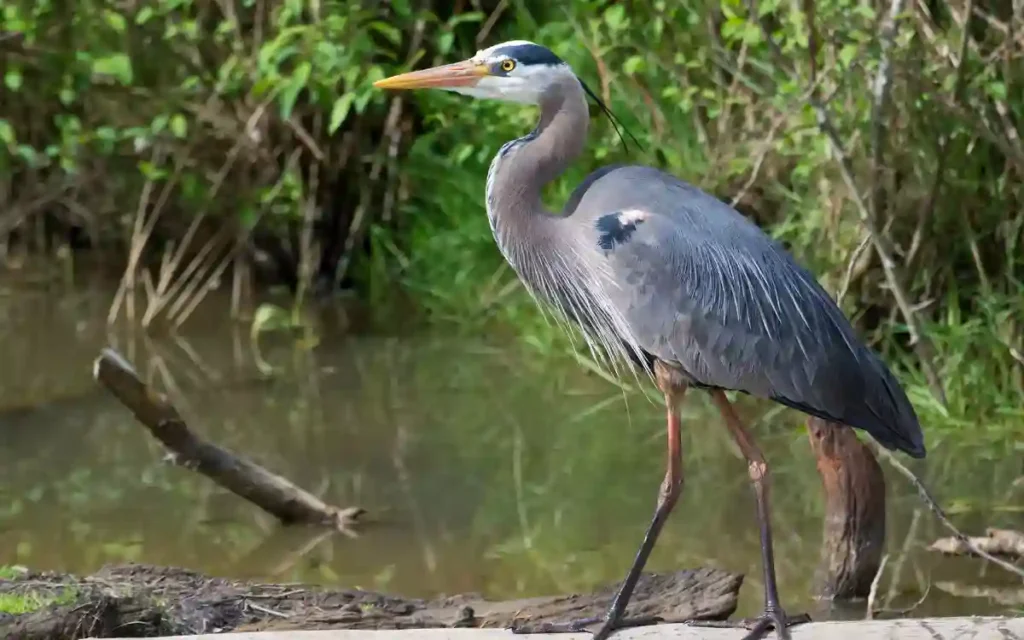
- Kingdom: Animalia
- Phylum: Chordata
- Class: Aves
- Order: Pelecaniformes
- Family: Ardeidae
- Genus: Ardea
- Species: Ardea herodias
The Great Blue Heron is easily recognizable with its tall, slender frame and striking blue-gray plumage. It has a long neck and long legs, perfect for wading in water. These herons are commonly found in wetlands, lakes, rivers, and marshes across North America.
They stand still in shallow water to ambush fish, frogs, and other aquatic creatures with their sharp bills. Great Blue Herons are solitary creatures at most times but come together during the breeding season to nest in large colonies high in trees. They are known for their slow, graceful flight with their neck tucked into an “S” shape.
- Length: 38.2-53.9 inches (97-137 cm)
- Weight: 74.1-88.2 oz (2100-2500 g)
- Wingspan: 65.8-79.1 inches (167-201 cm)
10.Snowy Owl (Bubo scandiacus):
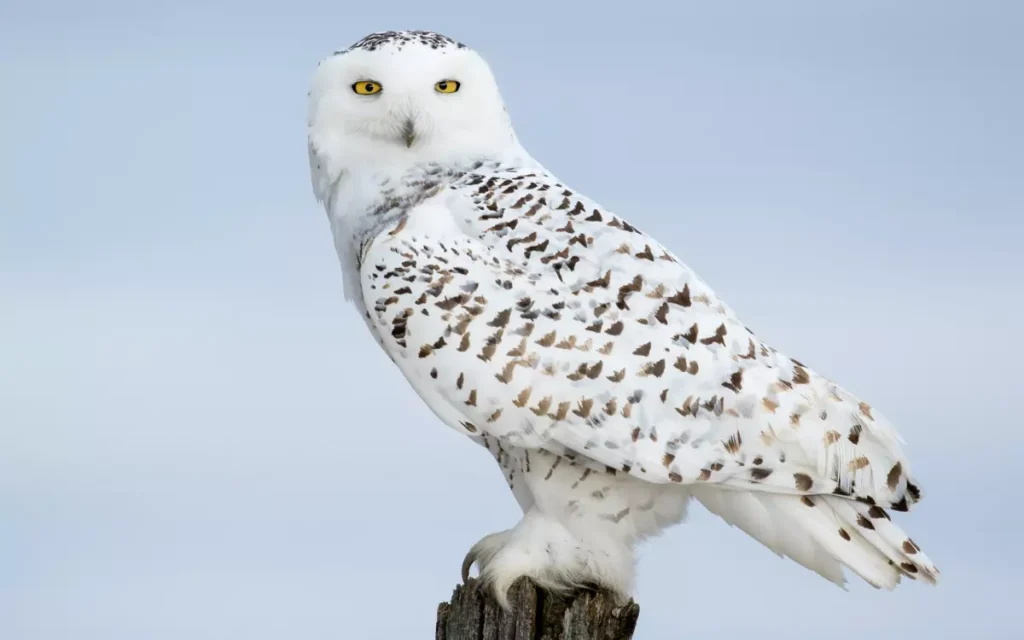
- Kingdom: Animalia
- Phylum: Chordata
- Class: Aves
- Order: Strigiformes
- Family: Strigidae
- Genus: Bubo
- Species: Bubo scandiacus
The Snowy Owl is famous for its striking white feathers that help it blend into snowy environments. This large bird has a rounded head with no ear tufts and captivating yellow eyes. Snowy Owls are found in the Arctic tundra but during winter, they sometimes migrate south to fields and shorelines in North America.
They are excellent hunters, primarily eating rodents, and are active during the day, unlike many other owl species. Notably, Snowy Owls are territorial and will defend their chosen area fiercely, especially against intruders. Their ability to live in extremely cold climates is another remarkable trait.
- Length: 20.5-27.9 inches (52-71 cm)
- Weight: 56.4-104.1 oz (1600-2950 g)
- Wingspan: 49.6-57.1 inches (126-145 cm)
11. Great Horned Owl (Bubo virginianus):
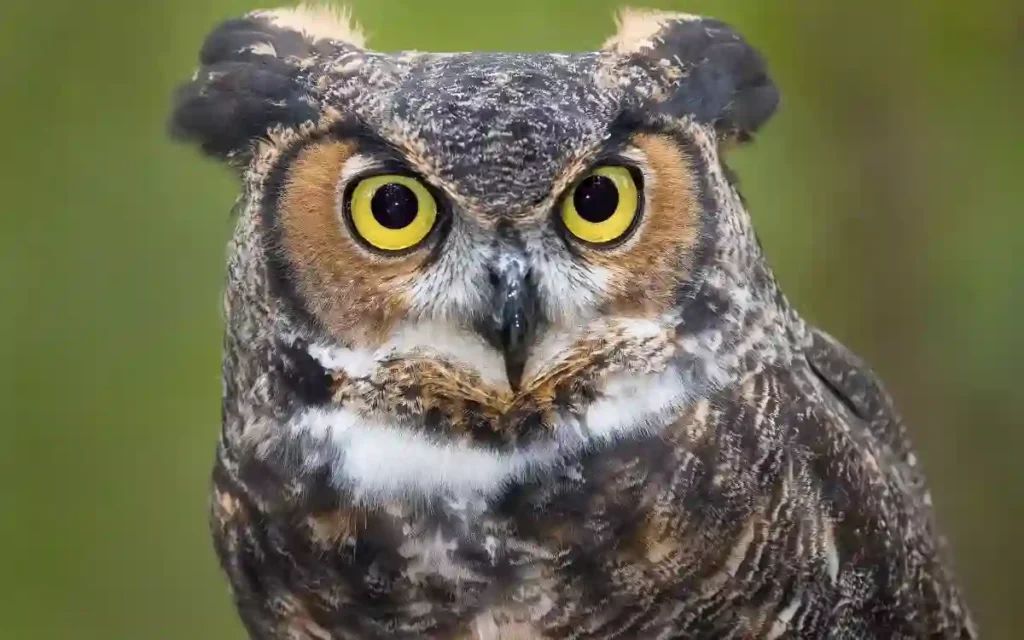
- Kingdom: Animalia
- Phylum: Chordata
- Class: Aves
- Order: Strigiformes
- Family: Strigidae
- Genus: Bubo
- Species: Bubo virginianus
The Great Horned Owl is known for its distinctive tufts of feathers on its head that look like ears and its deep, hooting call. Its body is covered in mottled brown feathers, which help it blend into the tree bark. This owl can be found in a variety of habitats including forests, deserts, and urban areas across North America.
It is a versatile predator, hunting at night for mammals, birds, and reptiles. Great Horned Owls are known for their strong territorial behavior, often taking over nests built by other birds. They are powerful and fearless, even capable of taking down larger prey like hawks and falcons.
- Length: 16.9-25.2 inches (43-64 cm)
- Weight: 32.1-88.2 oz (910-2500 g)
- Wingspan: 39.8-57.1 inches (101-145 cm)
12. Black Vulture (Coragyps atratus):
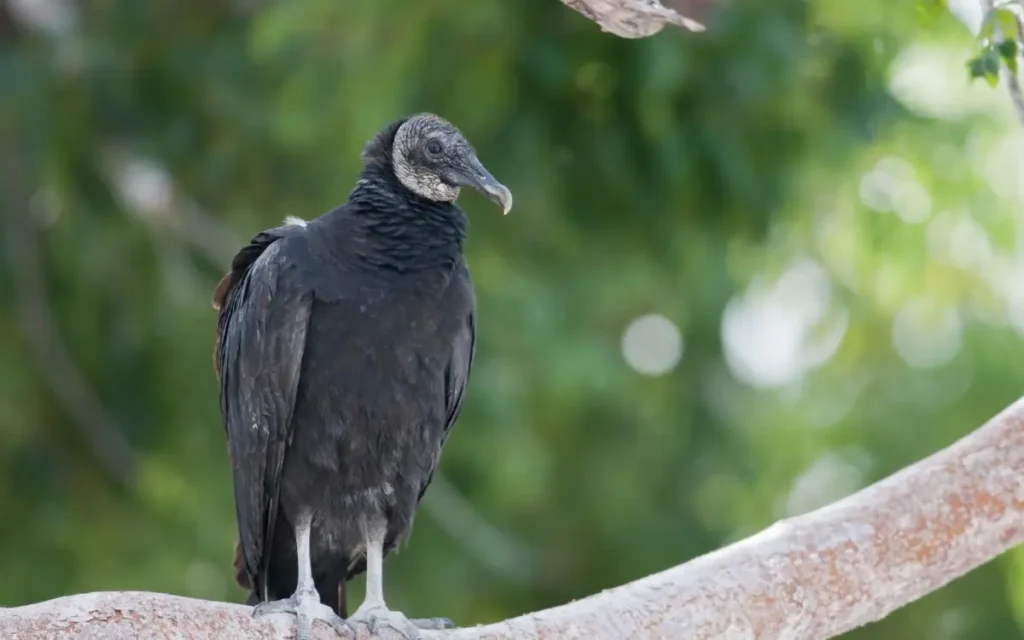
- Kingdom: Animalia
- Phylum: Chordata
- Class: Aves
- Order: Cathartiformes
- Family: Cathartidae
- Genus: Coragyps
- Species: Coragyps atratus
The Black Vulture is easily recognized by its dark black color and bare, grayish-black head. Unlike other birds, it has short wings and a short tail which make it look chunky in the air. These vultures are commonly found in open and semi-open areas like farmlands and suburbs across the southern and eastern United States.
They are scavengers, meaning they primarily eat dead animals, which helps prevent the spread of disease. Black Vultures are social birds, often seen in large groups. They are known for their strong sense of community, helping each other locate food and protect their young.
- Length: 22-29 inches (56-74 cm)
- Weight: 3.8-5.1 lbs (1.7-2.3 kg)
- Wingspan: 55-63 inches (1.4-1.6 m)
13.Osprey (Pandion haliaetus):
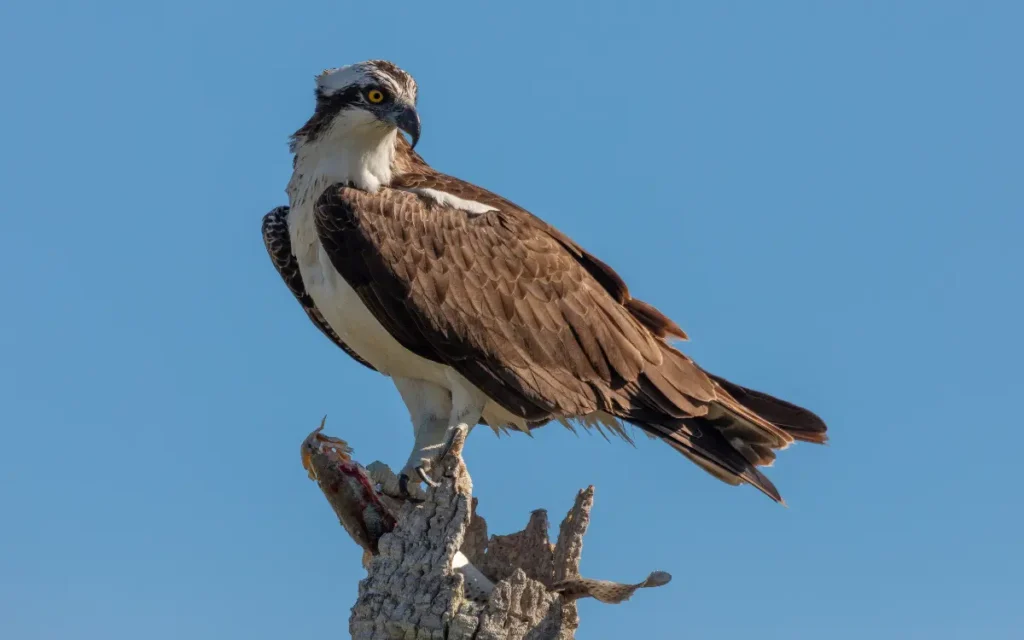
- Kingdom: Animalia
- Phylum: Chordata
- Class: Aves
- Order: Accipitriformes
- Family: Pandionidae
- Genus: Pandion
- Species: Pandion haliaetus
The Osprey is notable for its brown and white feathers, with a distinctive mask across its eyes that looks like a bandit’s mask. This bird is often found near water bodies like lakes, rivers, and coastal regions around the world because it primarily eats fish.
Ospreys are excellent fishers, diving into the water from high up to catch fish with their sharp talons. They are known for their unique behavior of rotating the fish headfirst to reduce air resistance as they fly back to their nests. Ospreys are migratory and are often seen traveling great distances between their breeding and wintering grounds.
- Length: 21.3-22.8 inches (54-58 cm)
- Weight: 49.4-70.5 oz (1400-2000 g)
- Wingspan: 59.1-70.9 inches (150-180 cm)
14. Great Egret (Ardea alba):
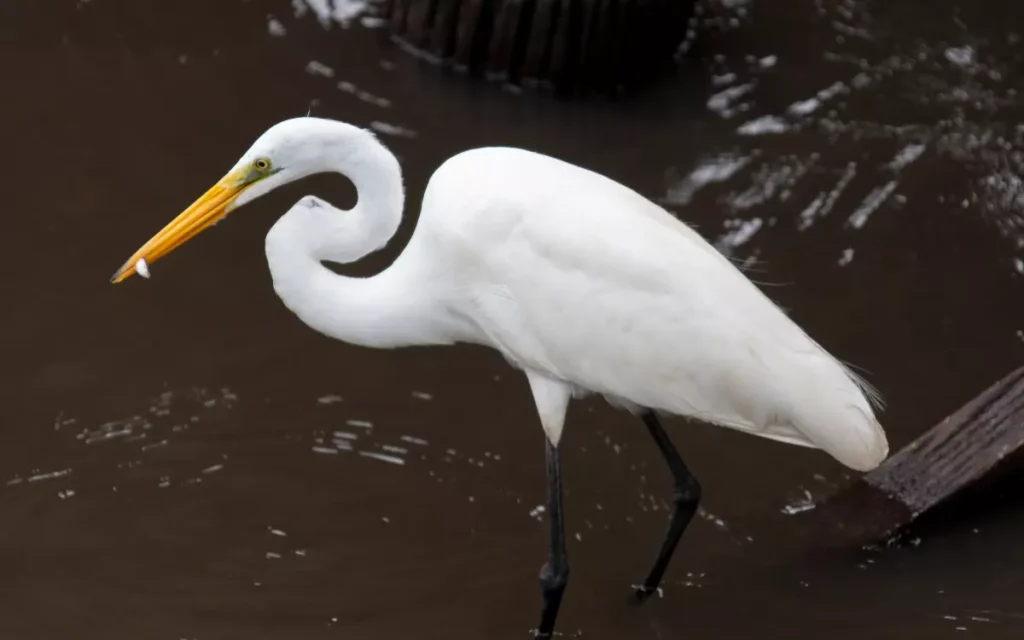
- Kingdom: Animalia
- Phylum: Chordata
- Class: Aves
- Order: Pelecaniformes
- Family: Ardeidae
- Genus: Ardea
- Species: Ardea alba
The Great Egret is a striking bird with its all-white feathers and long, slender neck and legs. It stands out due to its elegant appearance and is often seen wading in shallow waters. This bird frequents marshes, ponds, and rivers, where it hunts for fish, frogs, and small mammals by standing still and spearing prey with its sharp bill.
Great Egrets are also known for their spectacular mating displays, which include bill clattering and plumage fluffing to attract mates. They nest in trees, close to water bodies, often forming colonies with other waterbirds.
- Length: 37.0-40.9 inches (94-104 cm)
- Weight: around 35.3 oz (1000 g)
- Wingspan: 51.6-57.1 inches (131-145 cm)
15. Turkey Vulture (Cathartes aura):
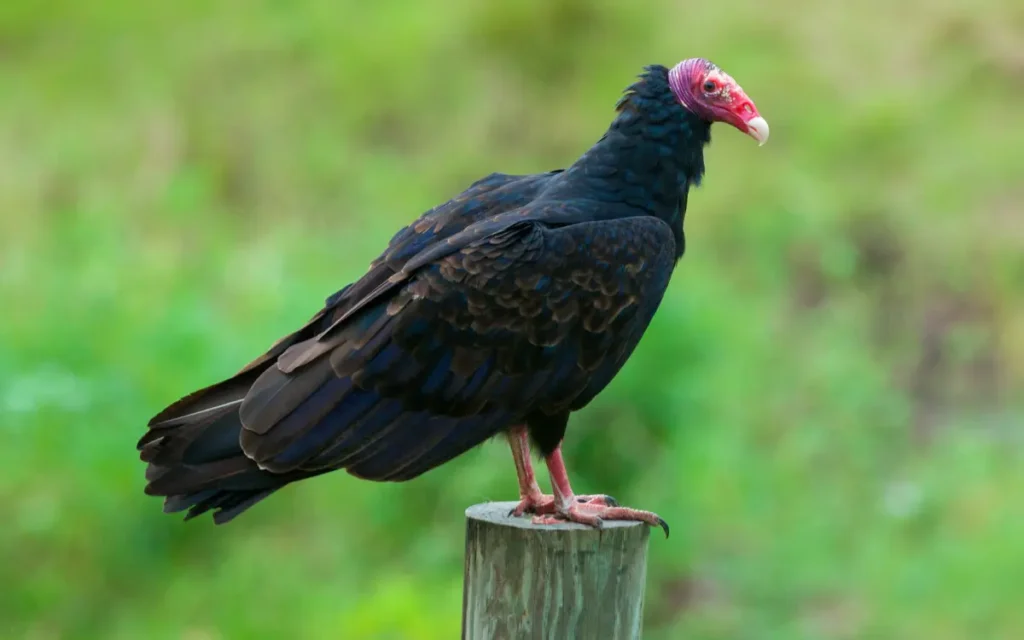
- Kingdom: Animalia
- Phylum: Chordata
- Class: Aves
- Order: Cathartiformes
- Family: Cathartidae
- Genus: Cathartes
- Species: Cathartes aura
The Turkey Vulture is easily recognized by its large size and redhead, which contrasts with its dark brown to black body. It has a wide wingspan that allows it to soar gracefully with minimal effort. Turkey Vultures are found in a variety of habitats, including forests, deserts, and suburban areas, across the Americas.
They are scavengers, primarily feeding on carrion (dead animals), which they locate by their excellent sense of smell—a rare trait among birds. These vultures are social creatures, often seen roosting in large groups. They play a vital role in the ecosystem by cleaning up after dead animals.
- Length: 24.4-31.9 inches (62-81 cm)
- Weight: 28.2-84.6 oz (800-2400 g)
- Wingspan: 63-72 inches (160-183 cm)
16. Rough-legged Hawk (Buteo lagopus):
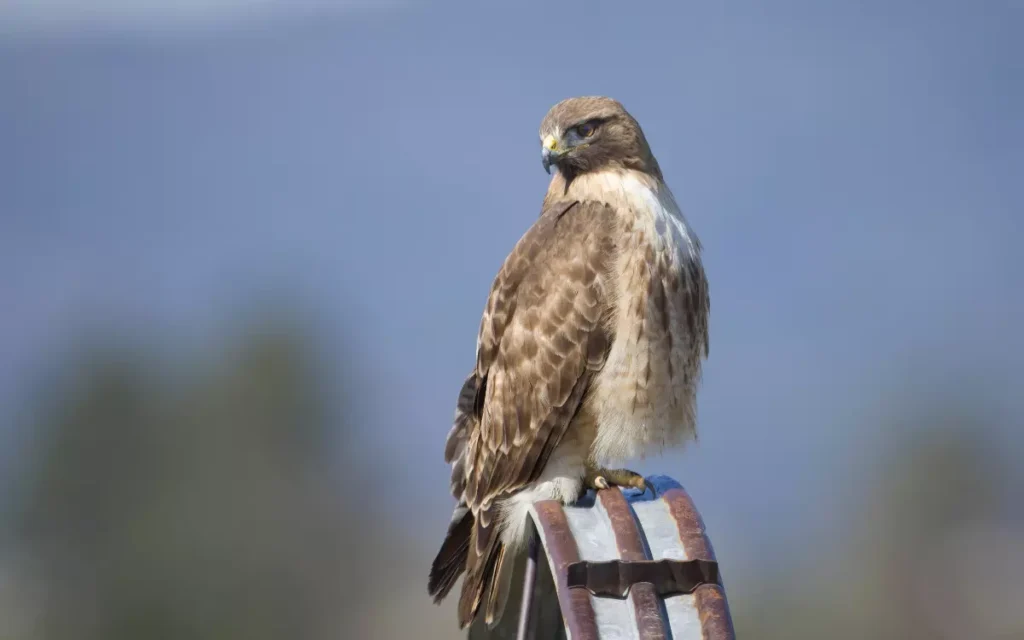
- Kingdom: Animalia
- Phylum: Chordata
- Class: Aves
- Order: Accipitriformes
- Family: Accipitridae
- Subfamily: Buteoninae
- Genus: Buteo
- Species: Buteo lagopus
The Rough-legged Hawk is known for its sturdy build and feathered legs, which help keep it warm in cold climates. This bird has a variety of color forms but typically features a dark belly band and a contrasting light head and body. It breeds in the Arctic tundra and migrates to open fields and marshes in lower latitudes for the winter.
A unique trait of the Rough-legged Hawk is its ability to hover in the air while hunting small mammals like voles and mice. These hawks build their nests on cliffs or ground and are known for their long-distance migrations.
- Length: in (cm)
- Weight: oz ( gm)
- Wingspan: in ( cm)
17.Gyrfalcon (Falco rusticolus):
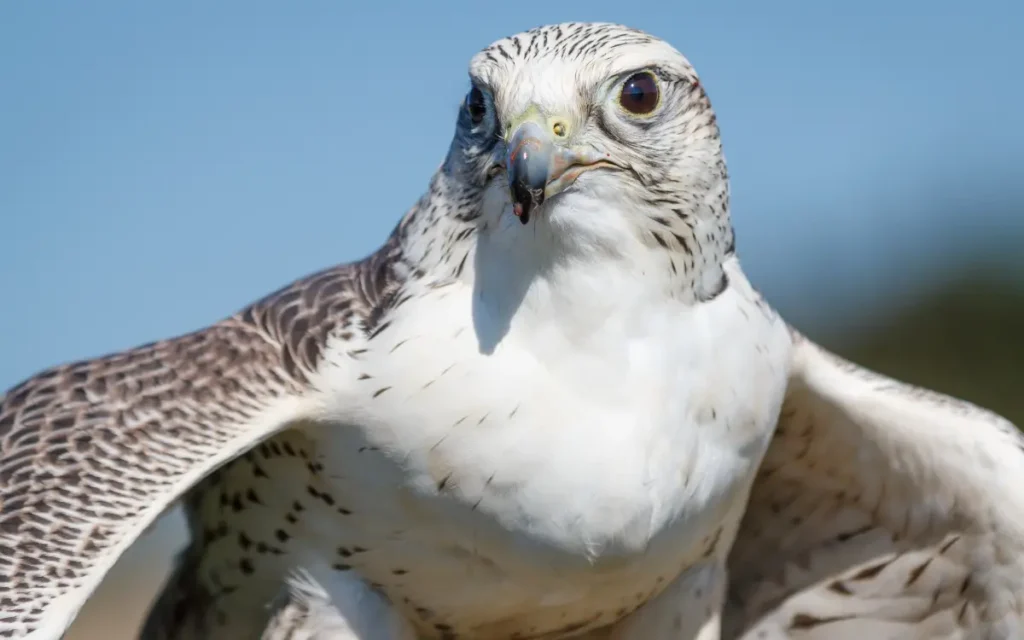
- Kingdom: Animalia
- Phylum: Chordata
- Class: Aves
- Order: Accipitriformes
- Family: Accipitrida
- Genus: Buteo
- Species: Buteo lagopus
The Gyrfalcon is the largest of the falcon species, known for its powerful build and impressive hunting skills. It has a variety of color forms, from nearly pure white to dark gray. This bird primarily inhabits Arctic and subarctic regions, where it can be seen soaring above tundra and mountains.
Gyrfalcons are apex predators, feeding mostly on birds and some small mammals, which they catch in midair or on the ground. They are solitary outside of breeding season and are known for their fast and powerful flying abilities. Their nests are typically found on cliff edges or high ground.
- Length: 18.5-20.5 inches (47-52 cm)
- Weight: 25.2-49.4 oz (715-1400 g)
- Wingspan: 52.0-54.3 inches (132-138 cm)
Conservation Status in West Virginia:
In West Virginia, many of the large birds like the Bald Eagle and Peregrine Falcon have seen improvements in their populations due to strong conservation efforts. These birds are protected under laws like the Migratory Bird Treaty Act and the Endangered Species Act, which help prevent harm and harassment to these birds and their habitats.
Conservation organizations, both local and national, play a crucial role. They work on protecting habitats, restoring areas that have been damaged, and educating the public about the importance of these birds. Efforts include monitoring bird populations, setting up protected areas, and rehabilitating injured birds.
Birdwatching in West Virginia:
West Virginia offers fantastic opportunities for birdwatching, where enthusiasts can observe many of the state’s largest birds in their natural habitats. Popular bird watching locations include:
- Canaan Valley National Wildlife Refuge: Known for diverse bird species, this refuge is a great place to see Bald Eagles and Great Blue Herons.
- Hawks Nest State Park: Offers excellent views of Ospreys and Golden Eagles.
- Dolly Sods Wilderness: A unique area to spot Rough-legged Hawks and Sandhill Cranes during migration.
Tips for Birdwatchers:
- Bring binoculars and a field guide to help identify different species.
- Visit during early morning or late afternoon, as birds are most active during these times.
- Stay quiet and patient; birds are more likely to appear when undisturbed.
For more information on local bird species, check out the Red, Orange & Yellow Birds of West Virginia guide for a colorful bird watching experience.
Frequently Asked Questions:
Q: Where can I see Bald Eagles in West Virginia?
A: Bald Eagles are commonly seen at the Canaan Valley National Wildlife Refuge and along large rivers like the Potomac.
Q: What is the best time for birdwatching in West Virginia?
A: Early morning and late afternoon are the best times, as birds are most active during these periods.
Q: Are there any tips for birdwatchers in West Virginia?
A: Bring binoculars, and a field guide, stay quiet, and visit known birdwatching spots like Hawks Nest State Park.
Q: What is the largest bird in Virginia?
A: The largest bird in Virginia is the Trumpeter Swan.
Q: How are large birds protected in West Virginia?
A: They are protected under the Migratory Bird Treaty Act and the Endangered Species Act.
Q: What should I bring on a birdwatching trip?
A: Essential items include binoculars, a bird field guide, comfortable walking shoes, and a camera.
Q: What types of habitats do large birds prefer?
A: Large birds often prefer wetlands, forests, and open fields.
Q: Are there bird watching events in West Virginia?
A: Yes, many parks and wildlife refuges host birdwatching events and guided tours, especially during migration seasons.
Q: How can I contribute to bird conservation?
A: Participate in local bird counts, support conservation organizations, and follow guidelines to protect bird habitats.
Conclusion:
Large birds are vital to West Virginia’s biodiversity, serving as key species in ecosystems and indicators of environmental health. They attract ecotourists, boosting the local economy through birdwatching and photography, emphasizing the importance of their protection.

